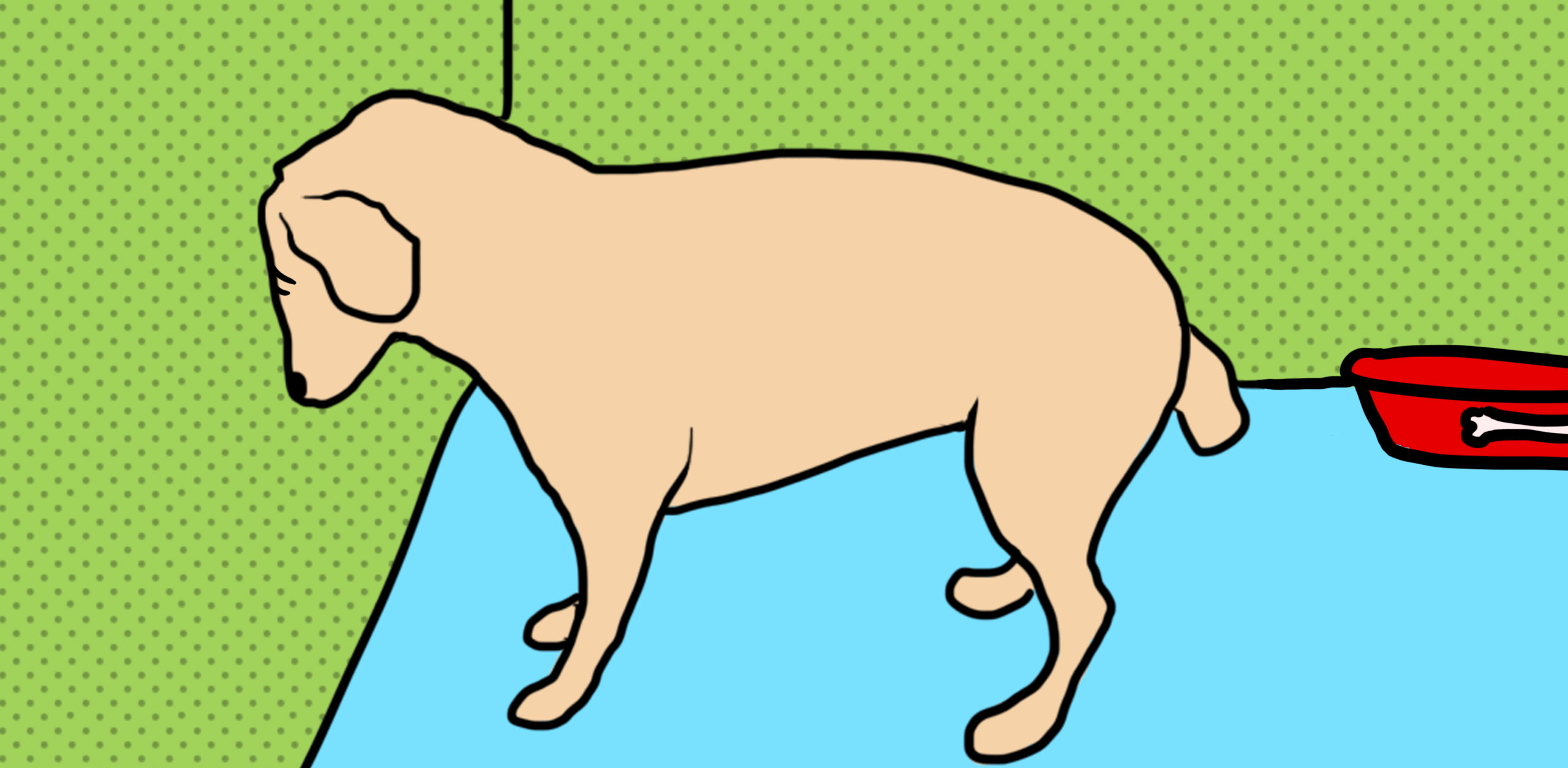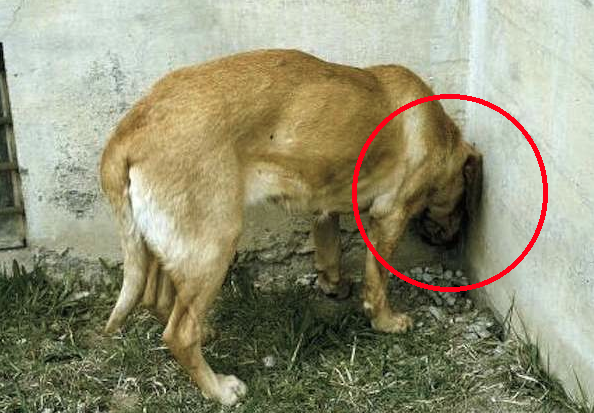Free Shipping On All Orders Over $150.
Recognizing Head Pressing in Pets: Signs of Serious Illness
Head pressing in dogs can be a perplexing behavior for many pet owners. It often raises concern, as it may indicate an underlying health issue or neurological condition. Recognizing the signs and potential causes of head pressing in dogs is crucial for maintaining their well-being. In this article, we will explore various aspects related to head pressing in dogs, shedding light on its significance, associated behaviors, and what you should do if your furry friend exhibits this concerning symptom.
Head Pressing in Dogs

Head pressing in dogs is characterized by a dog pressing its head against a wall, furniture, or even the owner's body. This behavior can be alarming to witness, as it often seems involuntary and persistent. While some dogs may occasionally display this behavior during play or exploration, repeated head pressing is generally a sign of distress or discomfort.
Understanding the underlying reasons behind head pressing in dogs can help pet owners differentiate between harmless play and potential health concerns. It's essential to closely observe your dog's behavior and any accompanying symptoms, as these can provide valuable insights into their overall health condition.
Recognizing Head Pressing Behavior
When evaluating whether your dog is engaging in head pressing, it’s important to observe the context and frequency of the behavior.
Sometimes, dogs may nuzzle against objects out of curiosity or affection rather than as a response to discomfort. However, if the behavior becomes excessive and your dog appears to be in a trance-like state, this may warrant further investigation.
Another aspect to consider is the environment in which head pressing occurs. Is it triggered by specific stimuli, such as loud noises, new surroundings, or stressful situations? Documenting these occurrences can provide valuable information for your veterinarian. If you're ever in doubt, reach out to a professional for guidance on how to interpret these actions.
Possible Causes of Head Pressing
Several factors could contribute to head pressing in dogs. These range from benign environmental influences to severe medical issues.
One common cause is neurological disorders, which can affect a dog's brain function and lead to abnormal behaviors. Conditions like encephalitis or tumors can trigger head pressing episodes. Additionally, toxins, metabolic imbalances, or infections could also manifest through this behavior.
It’s crucial to note that while head pressing in dogs can indicate serious health problems, it doesn’t always mean your dog is gravely ill. Regular veterinary check-ups and open communication with your veterinarian can help address concerns before they escalate.
Treatment and Next Steps
If your dog is exhibiting head pressing frequently, it's vital to seek veterinary attention promptly. The veterinarian will conduct a thorough examination to determine the underlying cause.
Treatment options will vary depending on the diagnosis. In cases where head pressing results from a treatable condition, prompt intervention can significantly improve your dog's quality of life.
Always remember that a proactive approach to your pet’s health can make all the difference. Monitoring their behavior and being vigilant about changes can lead to early detection and successful management of potential health issues.
Head Pressing in Cats

While head pressing is primarily associated with dogs, it can also occur in cats, albeit less commonly. Cat owners may notice their feline friends pressing their heads against walls or furniture, seeking comfort or displaying unusual behavior.
Recognizing head pressing in cats can be just as critical as in dogs, considering the implications it may have for their health. Understanding the differences between normal behavior and manifestations of stress or illness can help cat owners ensure their pets receive the appropriate care.
Distinguishing Normal Behavior from Abnormal
Cats are known for their quirky behaviors, which can sometimes confuse their owners.
In some cases, head pressing in cats may simply reflect a natural instinctive action, such as marking territory or seeking affection from their human companions. However, when this behavior becomes obsessive or repetitive, it could signal distress or an underlying issue.
Observing the circumstances surrounding the behavior is essential. Is the cat appearing anxious or disoriented? Are there other behavioral changes occurring, such as decreased appetite or lethargy? These are crucial indicators that should not be overlooked.
Underlying Health Issues in Cats
Head pressing in cats can be indicative of various neurological disorders or health issues, similar to those experienced by dogs.
Conditions like feline cognitive dysfunction syndrome, seizures, or vestibular disease can lead to disorientation and unusual behaviors, including head pressing. External factors, such as poisoning or exposure to toxic substances, may also result in significant health problems.
Knowing when to consult a veterinarian is key. If your cat displays excessive head pressing along with other troubling symptoms, don’t hesitate to seek immediate care. Early intervention can drastically influence treatment outcomes.
Managing Cat Head Pressing
Once you've determined that your cat's head pressing is not a simple quirk of character, consulting with a veterinarian is the next logical step.
After a thorough assessment, the vet may suggest diagnostic tests to pinpoint the exact cause of the behavior. Depending on the findings, treatment plans may include medication, lifestyle changes, or other interventions aimed at alleviating your cat's distress.
Taking immediate action can help prevent further complications and improve your cat's quality of life. As a responsible pet owner, staying aware of your cat’s habits and behaviors enables you to provide them with the best possible care.
Neurological Issues in Pets

Neurological issues in pets encompass a wide range of conditions that can affect their brain and nervous system. Understanding these issues is vital for pet owners who want to recognize signs of distress in their furry companions.
Many neurological disorders can manifest through unusual behaviors, including head pressing in dogs and cats. Being informed about these conditions allows pet owners to act swiftly if they suspect their pet may be suffering from a neurological problem.
Common Neurological Disorders in Pets
Some prevalent neurological disorders affecting pets include idiopathic epilepsy, vestibular disease, and degenerative myelopathy.
Epilepsy can lead to recurrent seizures, which may be mistaken for other behavioral issues. Vestibular disease affects balance and coordination, causing confusion and disorientation, while degenerative myelopathy gradually weakens a pet's legs over time.
Each of these conditions presents unique challenges and requires careful management. Owners must remain observant and proactive to ensure the best possible outcomes for their pets.
Observing Symptoms of Neurological Distress
Recognizing symptoms associated with neurological issues is critical for timely intervention. Apart from head pressing, signs of neurological distress can include:
- Loss of coordination
- Unusual gait or stumbling
- Changes in behavior or mood
- Seizures or convulsions
If you notice any combination of these symptoms, it's imperative to consult a veterinarian for a comprehensive evaluation. Prompt diagnosis and intervention can mitigate the progression of neurological disorders and enhance your pet's quality of life.
The Importance of Veterinary Care
Veterinary care plays an essential role in identifying and managing neurological issues in pets.
A veterinarian can perform diagnostic tests such as MRI scans or blood tests to better understand the underlying condition. Treatment options will depend on the specific diagnosis and may include medications, physical therapy, or dietary adjustments.
As pet owners, staying informed about neurological health can empower you to advocate for your pet effectively. Knowledge of warning signs and the importance of regular veterinary visits allows for early detection and intervention, leading to improved outcomes for your beloved companion.
Pet Head Pressing Causes

Understanding the potential causes of pet head pressing is crucial for identifying underlying health issues.
While head pressing in dogs and cats can stem from a variety of benign factors, it can also signify more serious health concerns that require immediate attention. By recognizing the different causes, pet owners can take appropriate steps toward addressing their pet's needs.
Environmental Factors
Environmental triggers can potentially lead to head pressing behaviors in pets.
Stressful situations, changes in routine, or exposure to loud noises can impact a pet's mental state. For instance, moving to a new home or introducing new pets can create anxiety, prompting a dog or cat to press its head against objects as a way to cope.
Creating a calm and stable environment can help lessen anxiety in pets. Providing safe spaces, ensuring familiar routines, and employing calming techniques can alleviate stress and reduce the likelihood of head pressing behaviors.
Medical Conditions
Various medical conditions can contribute to head pressing in pets. Neurological disorders, infections, and toxins rank among the most concerning issues that can lead to this behavior.
Conditions such as meningitis or encephalitis can cause inflammation of the brain, resulting in abnormal behaviors, including head pressing. Additionally, certain toxins found in household products or plants can adversely affect a pet's neurological function.
Promptly addressing any medical issues is vital for the well-being of your pet. Consulting a veterinarian as soon as you notice unusual behaviors can lead to timely diagnosis and treatment, improving your pet's prognosis.
Psychological Factors
Psychological factors, including anxiety and compulsive behaviors, can also play a significant role in head pressing in pets.
Pets experiencing extreme stress may engage in head pressing as a coping mechanism. This behavior may develop into a compulsive habit if left unaddressed, requiring targeted interventions to modify the behavior.
Seeking the help of a veterinarian or animal behaviorist can provide valuable insights into addressing psychological issues in your pet. Behavioral modification techniques, combined with environmental enrichments, can help alleviate anxiety and reduce head pressing behavior.
Dog Brain Disorder Symptoms

Being able to identify dog brain disorder symptoms is crucial for maintaining your pet's health and well-being.
Unlike humans, pets cannot communicate their feelings verbally, making it essential for owners to observe their dog's behaviors closely. Recognizing early warning signs can lead to timely interventions and improvements in their quality of life.
General Signs of Brain Disorders
Common symptoms of dog brain disorders may include:
- Disorientation or confusion
- Changes in appetite or thirst
- Unexplained aggression or fearfulness
- Repetitive behaviors such as pacing or circling
Not every display of unusual behavior indicates a brain disorder, but persistent patterns warrant closer examination.
Every dog is unique, and behavioral changes can arise from various factors. Therefore, keeping a detailed record of your dog's behaviors and any changes over time can aid in discussions with your veterinarian.
Recognizing Cognitive Dysfunction Syndrome
Cognitive dysfunction syndrome (CDS) is a common condition in older dogs, akin to dementia in humans.
Symptoms of CDS can include disorientation, disrupted sleep patterns, and altered social interactions. If your dog begins to exhibit behavioral changes consistent with cognitive decline, it's crucial to have them evaluated by a veterinarian.
Early diagnosis of cognitive dysfunction can lead to specific treatments designed to manage the symptoms effectively. Nutritional support, environmental enrichment, and medications may be recommended to enhance your pet's quality of life.
When to Seek Veterinary Care
As a responsible pet owner, knowing when to seek veterinary care is essential for your dog's well-being.
If you observe persistent signs of distress or behavioral changes that worry you, don’t hesitate to consult a veterinarian. They possess the expertise necessary to assess your dog's condition accurately and recommend appropriate interventions based on their diagnosis.
Your prompt action can be instrumental in providing your dog with the best possible chance of recovery and maintaining their quality of life.
Cat Neurological Disease

Cat neurological diseases can be difficult for pet owners to identify, given that felines often hide their discomfort.
However, understanding the common neurological diseases that affect cats can aid in recognizing signs of distress, including head pressing. Being informed about potential health risks enables pet owners to take proactive steps towards ensuring their cat's well-being.
Types of Neurological Diseases in Cats
Several types of neurological diseases can affect cats, including:
- Feline infectious peritonitis (FIP)
- Hyperthyroidism
- Cerebellar hypoplasia
FIP is a viral disease that can cause neurological symptoms, including seizures and behavioral changes. Hyperthyroidism, while primarily a metabolic disorder, can result in neurological effects due to elevated hormone levels.
Cerebellar hypoplasia is a congenital condition affecting coordination and balance, leading to unsteady movements and difficulties in navigation.
Warning Signs of Neurological Issues
Recognizing warning signs of neurological issues in cats is essential for timely intervention. Symptoms may include:
- Sudden changes in behavior or personality
- Loss of coordination or balance
- Altered vision or hearing abilities
Paying close attention to your cat's behavior can help you identify when something isn't quite right. If you notice any combination of these signs, consult a veterinarian as soon as possible for a thorough evaluation.
Diagnostic Approach for Feline Neurological Diseases
A comprehensive diagnostic approach is necessary to determine the underlying cause of neurological symptoms in cats.
Your veterinarian may recommend diagnostic imaging, blood tests, or spinal taps to gather relevant information. The results of these tests will guide the development of an appropriate treatment plan tailored to your cat's needs.
Engaging your veterinarian in open dialogue about your cat's symptoms and behavior is crucial to ensuring effective management of any neurological condition.
Signs of Serious Illness in Pets

Recognizing the signs of serious illness in pets is crucial for ensuring their well-being.
Beyond head pressing, various other symptoms may indicate underlying health issues that require immediate attention. Educating yourself about these signs can empower you to take swift action when necessary.
General Indicators of Illness
Signs of serious illness can manifest in many ways, including:
- Changes in eating or drinking habits
- Lethargy or decreased activity levels
- Vomiting or diarrhea
- Persistent coughing or difficulty breathing
These signs could indicate various health issues, from gastrointestinal disturbances to severe respiratory conditions.
As a pet owner, being aware of these signs ensures you can seek veterinary care promptly, improving the likelihood of successful treatment and recovery.
Behavioral Changes to Watch For
Behavioral changes in pets can serve as a red flag for underlying health issues.
If your pet suddenly becomes withdrawn, aggressive, or unusually vocal, these changes warrant close attention. Any significant shift in behavior may indicate physical discomfort or emotional distress, both of which require thorough evaluation.
Documenting these changes can help facilitate discussions with your veterinarian, enabling them to pinpoint potential causes and recommend appropriate interventions.
Importance of Routine Check-Ups
Regular veterinary check-ups are a cornerstone of preventive pet healthcare.
Routine assessments allow veterinarians to detect early signs of illness, even before noticeable symptoms appear. Through preventive care, you can help mitigate the risk of severe health issues developing, ultimately enhancing your pet's quality of life.
Maintaining a regular schedule for vaccinations, dental cleanings, and wellness exams can significantly contribute to your pet's overall health and longevity.
Why Does My Pet Press Its Head

"Why does my pet press its head?" is a question that many pet owners ask when encountering this puzzling behavior.
Understanding the underlying motivations for head pressing in pets can help ease concerns and inform how to respond appropriately.
Seeking Comfort or Security
In some instances, pets may press their heads against objects or people as a way of seeking comfort or security.
This behavior can be seen in pets that thrive on close physical contact with their owners. When feeling anxious or stressed, they may instinctively turn to head pressing as a means of self-soothing.
Providing your pet with a comforting environment and maintaining strong bonds can help reassure them during stressful times.
Compulsive Behaviors
For some pets, head pressing may spiral into a compulsive behavior, emerging from anxiety or frustration.
Such behaviors can become entrenched if left unaddressed, causing further distress for the pet. Identifying the root cause of the behavior and implementing strategies to redirect it is crucial for breaking the cycle.
Engaging a professional animal behaviorist can yield effective techniques for managing compulsive behaviors and fostering a healthier mindset for your pet.
Neurological Distress
As discussed previously, head pressing can also indicate neurological distress in pets.
If your pet exhibits head pressing alongside other concerning symptoms, it’s vital to consult a veterinarian for a proper diagnosis and treatment plan. Early intervention can significantly increase the chances of successful management and improvement of your pet's condition.
Pet Health Warning Signs

Being attuned to pet health warning signs can equip you to respond quickly to your furry friend's needs.
Identifying potential issues early on is essential for ensuring your pet receives timely care, thereby improving their overall well-being.
Physical Warning Signs
Physical warning signs of illness can manifest in various ways, including:
- Changes in weight or body condition
- Unusual discharge from eyes, ears, or nose
- Skin abnormalities or changes in coat quality
These signs can indicate underlying health conditions that necessitate veterinary attention.
Monitoring your pet's physical appearance and general health regularly can help you catch these warning signs early, creating opportunities for timely intervention.
Behavioral Warning Signs
Changes in behavior often serve as valuable indicators of your pet's health status.
If your pet exhibits sudden aggression, confusion, or withdrawal, it might signal an underlying issue requiring urgent attention. Behavioral shifts can indicate pain or discomfort that the pet cannot articulate, underscoring the need for prompt veterinary evaluation.
Stay vigilant and attentive to your pet's personality and behavior to detect these subtle yet critical changes.
Importance of Being Proactive
Adopting a proactive approach to your pet's health can yield significant benefits.
Educating yourself about common health issues, warning signs, and maintaining regular veterinary check-ups can empower you to act swiftly when needed. Your dedication to monitoring your pet's health can lead to a longer, happier life for your beloved companion.
Urgent Pet Medical Symptoms
Recognizing urgent pet medical symptoms is paramount for safeguarding your pet's health.
As responsible pet owners, being vigilant and knowledgeable about potential emergencies can make all the difference in your pet's well-being.
Emergency Symptoms to Watch For
Certain symptoms warrant immediate veterinary care, including:
- Difficulty breathing or choking
- Severe bleeding or trauma
- Loss of consciousness or seizure activity
These symptoms may indicate life-threatening conditions requiring urgent intervention.
If you observe any of these signs, don't hesitate to take your pet to the nearest emergency veterinary clinic. Acting quickly can save your pet's life and ensure they receive the necessary treatment.
Assessing Severity of Symptoms
When assessing symptoms, consider their severity and duration.
Persistent vomiting, diarrhea, or significant lethargy can escalate quickly into serious health threats. While not all symptoms necessitate emergency care, understanding when to seek help can be pivotal for your pet's health outcome.
Consulting with a veterinarian or calling a pet helpline can provide guidance on the urgency of the situation, helping you make informed decisions about your pet's care.
Preparing for Emergencies
Being prepared for pet emergencies can help you respond effectively when crises arise.
Keep a list of emergency veterinary clinics in your area, along with essential first-aid supplies readily accessible. Familiarize yourself with signs of distress and common emergencies so you can act confidently in urgent situations.
Preparation can provide peace of mind for both you and your pet, allowing you to focus on their well-being during challenging times.
Conclusion
In conclusion, recognizing and understanding head pressing in dogs and other related behaviors is essential for promoting your pet's health and well-being.
From neurological issues to environmental triggers, many factors can contribute to this puzzling behavior. By remaining vigilant and proactive, pet owners can identify warning signs and seek timely veterinary intervention, ultimately improving their furry friends' quality of life.
Empower yourself with knowledge about potential health risks and warning signs, enabling you to be the best advocate for your pet. Prioritize regular veterinary care, maintain open communication with professionals, and stay attuned to your pet's behaviors—these steps can make all the difference in ensuring their happiness and longevity.
0 comment
Be the first to comment